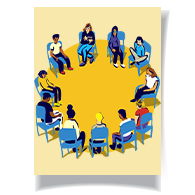Children and Youth in Tribal Communities: A Guide for Parents and Caregivers
A Guide for Parents and Caregivers
These materials were created specifically for children and youth in Tribal communities by Native authors and illustrators and are tailored to the needs of young children (ages 2 to 6), school-age children (ages 7 to 12), and teens (ages 13 to 18) who have been the victim and/or witness to a crime and are interacting with Tribal, state, and/or...


